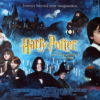Rabindranath Tagore Biography

Born: May 7, 1861, Kolkata
Death: August 7, 1941, Kolkata
Achievements: Nobel Prize for Literature for the collection of poems, Gitanjali, 1913, the founding of Visva-Bharti
Were literary and philosopher. He is the only Indian literary who got the Nobel Prize. He was also the first Asian to win the Nobel Prize and the first non-European to get Nobel in Literature. He is the only poet of the world whose writings are the national anthem of two countries – India’s national anthem ‘Jana Gana Mana’ and National Anthem of Bangladesh ‘Amar Sonar Bangla’ Rabindranath Tagore, also known as Gurudev, gave a new direction to Bengali literature and music.
He also used new kind of verse and prose and colloquial language in Bengali literature. With this, Bengali literature became free from the influence of Classical Sanskrit. Rabindranath Tagore played an influential role in bringing the goodness of Indian civilization to the fore and the good in the West.
His talent can be judged by the fact that when he was just 8, he wrote his first poem. At the age of 16, His poems were also published with the title ‘Bhanusima’. He was a great nationalist and condemned the British Raj demanding the country’s independence. After the Jallianwala Bagh Kand, he abandoned the knighthood given by the British.
Early life
Rabindranath Thakur was born on May 7, 1861, in Kolkata’s Jalsansanko Thakurbadi. His father was Debendranath Tagore and mother Sharda Devi. He was the youngest of the thirteen surviving children of his parents. When they were young, their mother died and her father was often on her journey, so they were brought up by servants and servants only. The Tagore family was at the forefront of ‘Bengal Renaissance’ (Renaissance). There were frequent publications of magazines, theatre, Bengali and Western music. Thus, the atmosphere of their home was not less than any school.
Rabindranath Tagore’s brother Dwijendranath was a philosopher and poet. His second brother Satyendranath Tagore was the first Indian to join the Indian Civil Service. Rabindranath Tagore’s brother Jyotindranath was a musician and playwright. Rabindranath Tagore’s sister Swarnakumari Devi was a poet and novelist. They did not like the traditional education system because they did not like to sit and sit in class.
He used to frequent family members along with his family members. His brother Hemandranath used to teach them. This study included swimming, workout, judo and wrestling. Apart from this, he also learned drawing, anatomy, history, geography, literature, mathematics, Sanskrit and English. You will be surprised to know that the formal education disliked them so much that they went only one day at Presidency College, Kolkata.
After his Upaniyan ritual, Ravindranath went out with his father on several months of India tour. Before reaching Dalhousie in the Himalayas tourist resort, he also went to the family’s manor Shantiniketan and Amritsar. In Dalhousie, he studied history, astronomy, modern science, Sanskrit, biography and analyzed the poems of Kalidas.
After this Rabindranath Tagore returned to Saxon and made some of his important works by 1877.
Rabindranath Tagore’s father Debendranath wanted to make him a barrister, so he sent Rabindranath to England in 1878. He enrolled in Law College in London, London, but after some time he left studies and self-studied compositions of Shakespeare and some other writers. In 1880, he came back to Bengal without a degree of law. In the year 1883, he was married to Mrinalini Devi.
Carreer
From the time of his return from England and from his marriage till 1901, Rabindranath spent most of his time in the palace of his family located in Siala (now in Bangladesh). In 1898, his children and wife also started living with them. He travelled extensively in his farms spreading far and saw the life of rural and poor people very closely. From 1891 to 1895, he wrote several short stories based on the background of rural Bengal.
Rabindranath went to Shantiniketan in the year 1901. He wanted to establish an ashram here. Here he built a school, library and a place of worship. They planted many trees here and made a beautiful garden. This is where his wife and two children also died. His father also settled in 1905. By this time, they had started earning monthly income from their inheritance. Some of the revenues started from royalties of their literature.
On November 14, 1913, Rabindranath Tagore received the Nobel Prize in Literature. The Swedish Academy, a Nobel Prize-winning organization, decided to translate some of his works and give them these awards on the basis of ‘Gitanjali’. The English government provided him with a knighthood in 1915, which Rabindranath left after the 1919 Jalianvala Bagh massacre.
In 1921 he along with agricultural economist Leonard Amherst established his ‘Village Reconstruction Institute’ near his ashram. Later, its name was changed to Sriniketan.
In the last decade of his life, Tagore was very socially active During this, he wrote about 15 prose and verse treasures. He touched many facets of human life through the literature written during this period. During this time, he also wrote articles related to science.
Last Time
He spent the last 4 years of his life suffering and in sickness. At the end of 1937, he became stupid and stayed in this state for a long time. This happened once again after three years. During this time he would write poems when he was right. Poems written during this period are one of his finest poems. After a prolonged illness, on August 7, 1941, he said goodbye to this world.
Trips
From 1878 to 1932, he travelled to 30 countries. The main purpose of his visits was to bring his literary works to those people who did not understand Bengali. The famous English poet William Butler Yeats proposed the introduction of the English translation of Gitanjali. His last foreign visit was in Ceylon (now Sri Lanka) in 1932.
Literature
Most people know him as a poet, but in reality, it was not so. Along with poems, he also wrote novels, articles, short stories, travel stories, dramas and thousands of songs.
Music and Art
Along with a great poet and writer, Guru Rabindranath Tagore was also an excellent composer and painter. He wrote about 2230 songs – these songs are called Ravindra Music. It is an integral part of Bengali culture. The national anthem of India and Bangladesh, written by Rabindranath Tagore, is also part of this Rabindra music.
At approximately 60 years of age, Rabindranath Tagore started showing interest in drawing and painting. He incorporated the style of different countries in his art.
Political views
Their political views were very complex. He criticized Europe’s colonialism and supported Indian nationalism. Along with this, he criticized the indigenous movement and said that we should focus on the development of the common people of the masses – in this way we can pave the way for independence.
In support of the Indian independence movement, he wrote many songs. After the 1919 Jallianwala Bagh Narasimhar, he renounced the knighthood given by the British. He played an important role in resolving the differences between Gandhi and Ambedkar on the issue of separate electorate for untouchables.
Also Read: The Power of your Subconscious Mind
Share via:


